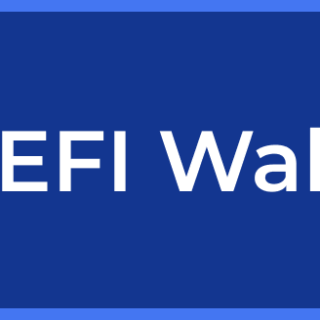Intro to THORChain RUNE ($RUNE)
$RUNE
Rune is the native asset to the THORChain ecosystem. With the native $RUNE token, a holder has the ability to make their tokens productive in several ways.
1. AS LIQUIDITY: As the settlement asset of the THORChain blockchain, Rune is used by swappers to pay for transaction fees, as well as by Liquidity providers (LPs), who provide liquidity using Rune to earn yield through fees.
2. AS SECURITY: Node operators, also known as Thornodes or NOs, bond Rune in order to help secure the network and sign transactions.
3. AS GOVERNANCE: Rune acts as an on-chain governance asset for determining the priority for nodes, assets, and chains voting.
4. FROM INCENTIVES: Gas on the THORChain network is subsidised for network participants. Additionally, Node Operators and Liquidity Providers are paid out emissions to contribute to the network’s security.
5. One will be able to mint synthetic assets for cross-chain savings accounts by depositing Rune.
Do note there are currently three types of Rune tokens:
- BNB.RUNE (Binance-based Rune) and ETH.RUNE (Ethereum-based Rune)
- Rune in the BNB/ETH “wrapped” form is not productive, aka it cannot be LP’ed, used to pay transaction fees, or bonded into nodes to secure the network. There is a phase-out (termed “killswitch”) planned for these legacy tokens, intended to eventually incentivise all BEP2 RUNE and ERC20 RUNE to be converted to native Rune.
- THOR.RUNE (Native Rune)
- Do note: only native Rune is used on THORChain and must be upgraded from BNB/ETH-based Rune in order to be used for productive utility. This is why we call it upgrading to native Rune, which will be its final form on the blockchain once all IOUs for wrapped Rune are phased out.
Tokenomics:
- Max supply of 500 million Rune tokens.
- 44.1% for protocol reserves (paying node operators and liquidity providers).
- 5.2% to early seed investors.
- 10% to support the team building THORChain.
- 10.4% to the community.
- 10.5 to operational reserve for staff incentives.
- And 19.8% for circulating supply.
Rune value capture:
- The Rune token has a unique value accrual when it comes to its tokenomics and value capture of its pooled liquidity.
- Liquidity providers effectively always provide 50% Rune and 50% non-Rune assets to an LP position. $100 of Bitcoin is matched with $100 of Rune at all times. Unlike some exchanges, this allows Rune to be the intermediary for every asset pair, ensuring deeper liquidity and increased swap volume on its Continuous Liquidity Pools (CLP).
- Node Operators:
- Nodes are required to bond $2 of Rune for every $1 of a non-Rune asset due to the incentive pendulum and soft caps on liquidity. This ensures that Nodes won’t steal from liquidity providers and secures the network. Nodes compete to stay active by bonding more and more Rune.
- Unmatched 3:1 Value Accrual
- For every $1m of non-Rune assets in the pool, the total deterministic value of Rune would be $3m because of the requirements for RUNE to be bonded at a 3:1 ratio. Liquidity pools essentially have a positive effect on the monetary base value of Rune. More liquidity, more Rune bonded, more value accrued for token holders!


